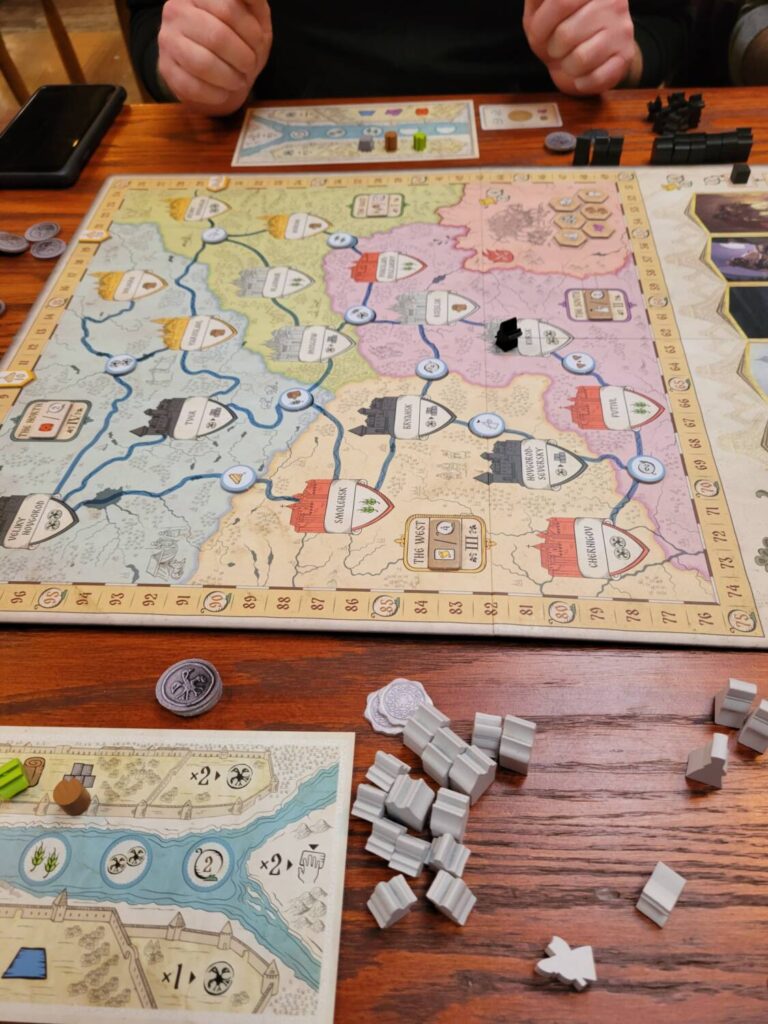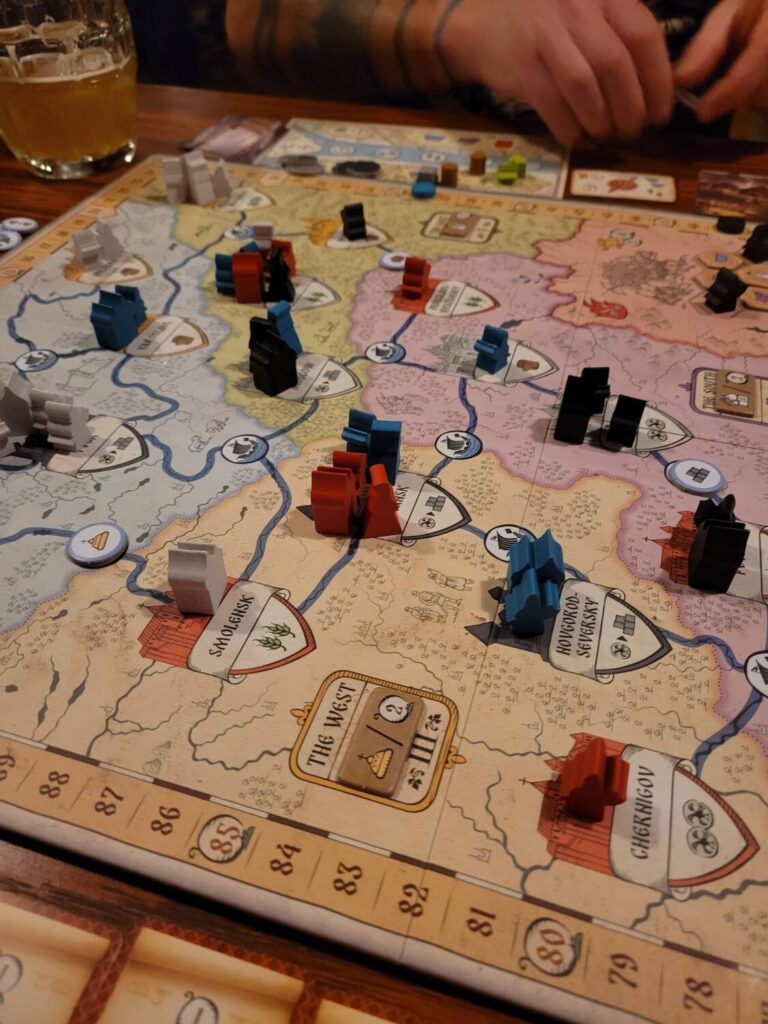Disclosure: Meeple Mountain received a free copy of this product in exchange for an honest, unbiased review. This review is not intended to be an endorsement.
The First Tzar: Ivan the Terrible’s cover evokes a period where life was nasty, brutish, and short. As far as the gameplay goes, however, it should be called Ivan the Extremely Balanced and Minimally Punishing.

To start, The First Tzar has something I like: a map. Love a good map. You’ve got four different colors of city, and waterways connecting all of them. Great start. Each city on the board produces different resources and can hold unlimited pieces of wood, but only one building in one player color. There’s four regions that the cities fall into, and there is a majority contest to get goodies from each region at the end of the round. The game flows around trying to get your pieces into the correct positions for resource gathering and scoring.
Ivan’s Game
The game has four rounds. Each round, you’ll first place your boyar pieces in one of five locations. You can slide some money under a piece when you place it, which I’ll come back to in a minute, but this very much resembles the worker bidding mechanism in games like Bruxelles 1893. Everyone has three boyars, and once they all have been placed, one at a time, you move to the next phase of the game.
Going in clockwise order, each player will resolve one of their boyars, first performing the action of the space it’s on, and then sending it to an “assignment,” which is one of the cities on the board or a specific “no assignment” card. Each action space has a basic action and a bonus you get to do if your boyar is the most important boy(ar) in the land. This is where the bid comes in. If you have the most money under your boyar in a given action space, you get to do the bonus action. Ties are broken by a tiebreaker track, which is used whenever you find ties elsewhere in the game. Everyone who wasn’t Ivan’s special boy gets their money back.
The actions are straightforward. You’re harvesting resources from the board, placing and moving soldier pieces, doing conversions between the game’s resources, collecting and completing objective cards, and gaining cards that give you free action abilities or scoring categories. After you complete an action, your boyar goes to a city on the board that matches the card beneath the action space, which is randomized each round.

At the end of the round, there are majority competitions for goodies that I mentioned earlier, and at the end of the 2nd and 4th rounds, players score cards, and score for majorities on the tiebreaker track and another area that grants tokens that give bonuses.
Truly Terrible?
I feel that this review is a little perfunctory, but ultimately it’s because The First Tzar just failed to capture my imagination, in spite of it being mechanically solid and having lovely art and graphic design. Part of this is because despite there being things that players technically “compete” over (majorities, trying to get a bonus action, putting down buildings before other players do), the game lacks tension. Everything is so well-balanced, and the contract fulfillment aspect of the game is so obviously important, that decisions don’t really carry much weight. Each contract gives you a mess of points and allows you to build a building, get a bonus, or activate trade tokens for points and other bonuses that they really are the focal point of the game.
And, because every player is going after contracts, there’s not really much to feel competitive over. You’re not making wild gambits that the other players can see, you can’t really pursue an oddball strategy to see if it pans out.
You’re mostly just moving around bits, collecting things, and turning them into other things. I suppose I’m old and curmudgeonly, but I suppose I expect more from a game that takes close to two hours of my limited time on Earth.











Add Comment